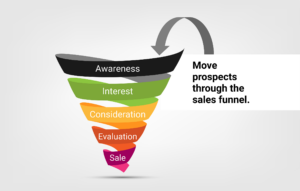
By Matt Serra, CEO, Mulberry Marketing Communications
A well-crafted business-to-business (B2B) marketing plan is crucial to the success of any B2B organization. Whether you are a startup or publicly traded company, having a clear roadmap for your marketing efforts can make a significant difference in achieving your business objectives.
In any industry, standing out from the competition can be challenging. It’s therefore critically important to identify what makes your business unique and craft clear and compelling messaging that articulates why your customers should choose you over the competition. Then, develop a plan for reaching your customers and prospects at the right time, with the right message, to drive growth.
Understanding Your Target Markets
Before determining what your B2B marketing plan will include, it’s important to identify who you want to sell to and what their buying motivations include. Start by identifying geographic markets, target industries and target titles. For example, a manufacturer of commercial-grade cleaning supplies may target schools and universities, hospitals, building service contractors (BSCs) and long-term care facilities in North America. Within these industries, identify who makes the jansan product purchasing decisions. This could be owners, facility managers, procurement teams, environmental services directors, school administrators, etc. Then build personas describing each of your target customers’ buying motivations and how they communicate. This will help you to be strategic, and more impactful, with your messaging to prospects. A robust market analysis that includes identifying exactly who you want to reach and how they communicate forms the foundation of your marketing plan.
Set Clear Goals and Objectives
Define clear marketing goals and objectives that align with your overall business goals. Goals can be higher level and more aspirational, whereas objectives should be measurable and timebound. For example, goals may include the following:
To achieve these goals, the objectives could be:
Whether you own your business or report into an owner, VP or CEO, establishing clearly defined goals and objectives will help you determine what strategies and tactics to employ. Whether it’s increasing brand awareness, driving website traffic, or boosting sales, having specific objectives will guide your marketing efforts and allow you to track progress over time.
Developing A Value Proposition
A value proposition clearly explains how you solve your customers’ problems and communicates why your services are better than your competitors.’ Your value proposition should be brief, to the point and articulate what makes you unique and why your customers should care.
When developing a value proposition, make sure it is easy to understand. The best value propositions are short and concise. Anyone who reads it should be able to easily understand what you offer and why it is unique. It is also important to provide clear benefits. If you have any results or figures to include that validate your value proposition, include them. Finally, use language that your target audience understands. Keep “marketing speak” out of your value proposition. Words like “best in class” or “innovative” are better suited to a product data sheet or PowerPoint presentation. Create something that is clear, concise and memorable, and most importantly, helps you stand apart.
Marketing Strategy – Consider the Buyer’s Journey

When developing your marketing strategy, it is important to consider the buyer’s journey and to deelop a plan that helps you to reach your prospcects at every stage of the sales funnel. This includes:
Inbound and Outbound Marketing Activity: A Two-Pronged Approach
When developing a B2B marketing plan, it is important to include a mix of inbound and outbound marketing activities. Inbound marketing activities focus on drawing people in who have a need for your products and services. This is done by creating content and promoting it to target audiences. Common inbound marketing activities include:
Outbound marketing includes communicating directly to prospects and customers to promote your brand and sell your services. Common outbound marketing activities include:
Implementing a good mix of inbound and outbound activities will help you to reach and influence prospects at different phases of the buyer’s journey. The types of activities will be determined by your target audiences and budget.
Common Marketing Tactics
When building your B2B marketing plan, it is important to choose tactics that help achieve your marketing goals and objectives. Common outbound and inbound tactics include direct mail and email campaigns, Google AdWords, SEO, social media, public relations and events.
Content marketing is also an outstanding way to reach and influence your target prospects. This includes developing content that educates your prospects and customers about your products and services and positions your business as an industry leader. Consider developing a calendar that describes every piece of content that will be developed and/or promoted each month, target audiences for that content, the distribution channel and the goal of each activity. This will ensure that every piece of content is working to achieve your B2B marketing goals and objectives and is reaching the right prospects.
Measuring Campaign Success
You should review the results of your campaign quarterly or bi-annually. This will help you to determine if you need to course correct to achieve your goals or if you need to reset expectations with leadership, or yourself. Three areas to focus on in terms of marketing campaign evaluation include:
Bringing it All Together
A strategic B2B marketing plan builds a solid foundation for building brand awareness, engaging your target audiences and achieving sustainable business growth. Revisit and update your plan regularly to ensure you are achieving the goals and objectives you set out to achieve. A well-thought-out marketing plan is a roadmap to success and an essential tool for growth.